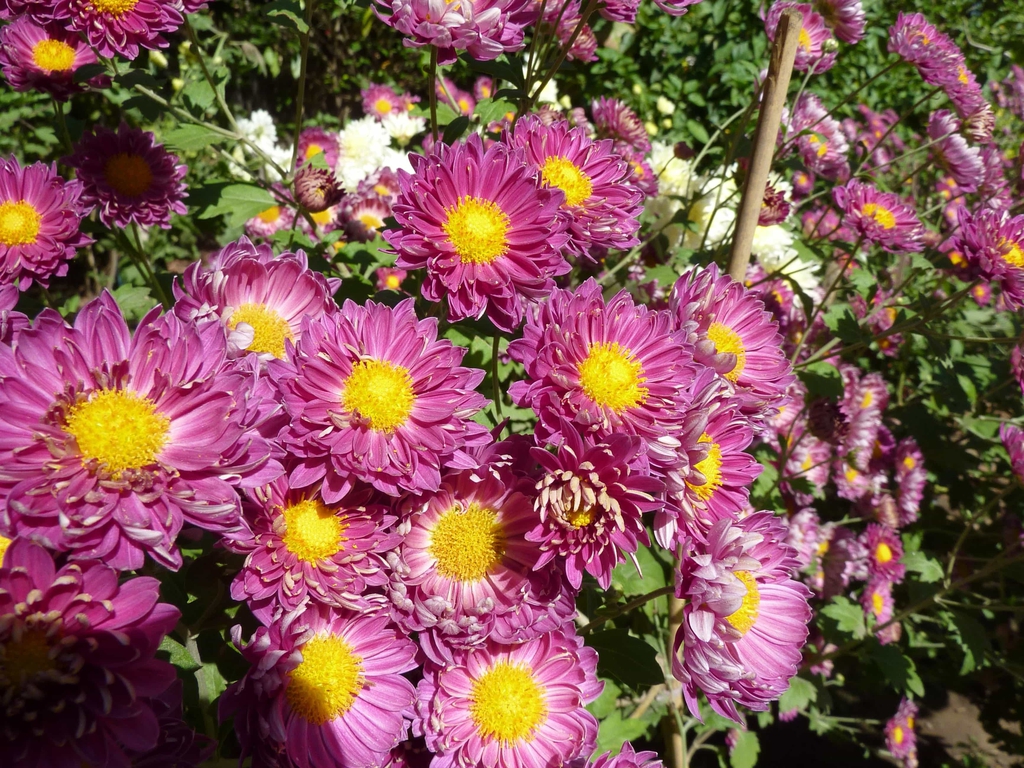Caring for Mums
go.ncsu.edu/readext?635219
en Español / em Português
El inglés es el idioma de control de esta página. En la medida en que haya algún conflicto entre la traducción al inglés y la traducción, el inglés prevalece.
Al hacer clic en el enlace de traducción se activa un servicio de traducción gratuito para convertir la página al español. Al igual que con cualquier traducción por Internet, la conversión no es sensible al contexto y puede que no traduzca el texto en su significado original. NC State Extension no garantiza la exactitud del texto traducido. Por favor, tenga en cuenta que algunas aplicaciones y/o servicios pueden no funcionar como se espera cuando se traducen.
Português
Inglês é o idioma de controle desta página. Na medida que haja algum conflito entre o texto original em Inglês e a tradução, o Inglês prevalece.
Ao clicar no link de tradução, um serviço gratuito de tradução será ativado para converter a página para o Português. Como em qualquer tradução pela internet, a conversão não é sensivel ao contexto e pode não ocorrer a tradução para o significado orginal. O serviço de Extensão da Carolina do Norte (NC State Extension) não garante a exatidão do texto traduzido. Por favor, observe que algumas funções ou serviços podem não funcionar como esperado após a tradução.
English
English is the controlling language of this page. To the extent there is any conflict between the English text and the translation, English controls.
Clicking on the translation link activates a free translation service to convert the page to Spanish. As with any Internet translation, the conversion is not context-sensitive and may not translate the text to its original meaning. NC State Extension does not guarantee the accuracy of the translated text. Please note that some applications and/or services may not function as expected when translated.
Collapse ▲Chrysanthemums, or garden mums as they are often referred to, are a quintessential fall blooming flower for many seasoned and casual gardeners.
Although many people treat mums as annuals, disposing of their plants after the fall decoration season, mums are actually perennials in our area. If properly cared for, they can provide gorgeous seasonal color for years to come.
Early to mid-November, before the first frost, is a great time to plant your containerized mums in the ground. Before you plant them in the ground, find a sunny, well-drained place in your garden. Mums perform best when given at least 6 hours of sun a day. Make sure you to give your newly planted mums plenty of water as they begin to establish. Aweekly addition of a water-soluble fertilizer during the bloom period is also recommended.
Plant your mums at the same depth as they are in their containers, and apply 2-3 inches of mulch around the plants. Organic mulch will help maintain adequate moisture, prevent weeds, add organic matter to your soil, and help protect the plants during cold winter weather. Pinch off dead flowers throughout the fall to keep plants looking their best.
To ensure beautiful blooms during the fall, when most people expect mums to be flowering, pinch off buds that form in the summer down to a full leaf.
You can do this until the end of July without compromising your fall blooms.
Fertilizer can be applied at the end of May and timed with your pinching back of the buds.
With these few tips in mind, enjoy your garden mums for years to come!




